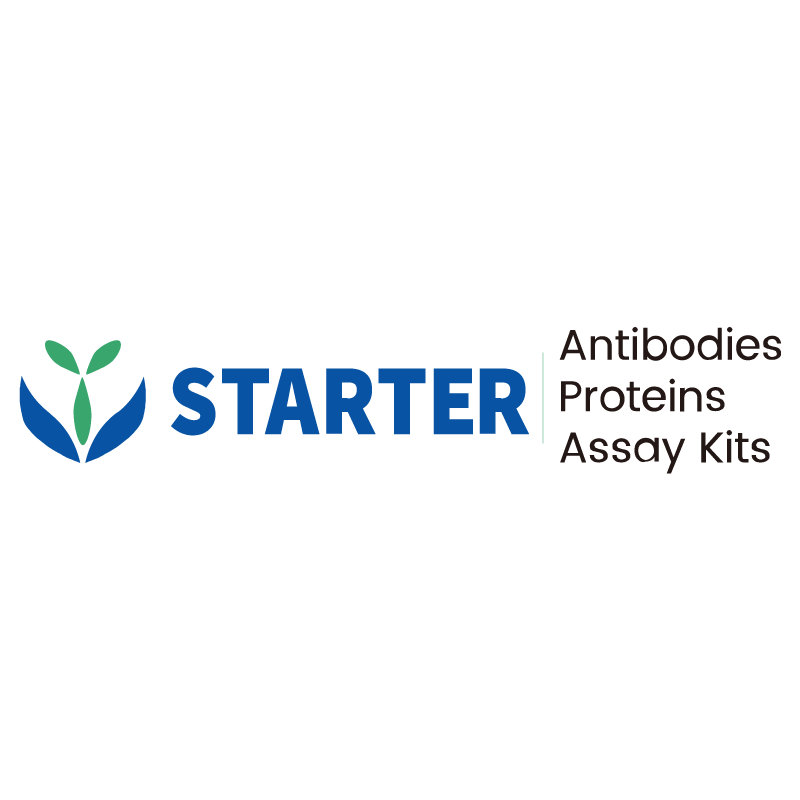WB result of CDK5 Recombinant Rabbit mAb
Primary antibody: CDK5 Recombinant Rabbit mAb at 1/1000 dilution
Lane 1: HeLa whole cell lysate 20 µg
Lane 2: SH-SY5Y whole cell lysate 20 µg
Lane 3: Jurkat whole cell lysate 20 µg
Secondary antibody: Goat Anti-Rabbit IgG, (H+L), HRP conjugated at 1/10000 dilution Predicted MW: 33 kDa
Observed MW: 30 kDa
Product Details
Product Details
Product Specification
| Host | Rabbit |
| Antigen | CDK5 |
| Synonyms | Cyclin-dependent kinase 5; Cell division protein kinase 5; Cyclin-dependent-like kinase 5; Serine/threonine-protein kinase PSSALRE; Tau protein kinase II catalytic subunit (TPKII catalytic subunit); CDKN5; PSSALRE |
| Immunogen | Synthetic Peptide |
| Location | Cytoplasm, Nucleus |
| Accession | Q00535 |
| Clone Number | S-1309-115 |
| Antibody Type | Recombinant mAb |
| Isotype | IgG |
| Application | WB |
| Reactivity | Hu, Ms, Rt |
| Positive Sample | HeLa, SH-SY5Y, Jurkat, NIH/3T3, Neuro-2a, mouse cerebellum, PC-12, rat cerebellum |
| Predicted Reactivity | Bv |
| Purification | Protein A |
| Concentration | 0.5 mg/ml |
| Conjugation | Unconjugated |
| Physical Appearance | Liquid |
| Storage Buffer | PBS, 40% Glycerol, 0.05% BSA, 0.03% Proclin 300 |
| Stability & Storage | 12 months from date of receipt / reconstitution, -20 °C as supplied |
Dilution
| application | dilution | species |
| WB | 1:1000 | Hu, Ms, Rt |
Background
CDK5 is a proline-directed serine/threonine kinase that plays a regulatory role in the phosphorylation/dephosphorylation of the eukaryotic cell cycle. Unlike other cyclin-dependent kinases, CDK5 is not activated by cyclins but by p35/p25 proteins, which are highly expressed in the nervous system. CDK5 controls key neural functions such as cytoskeletal structure and dynamics, axonal guidance, neuronal migration, cell adhesion, synaptic transmission, and membrane transport in the nervous system. The absence or dysfunction of CDK5 can lead to neurodevelopmental disorders, while its overactivation can lead to neuronal death and is considered a key factor in Alzheimer's disease. CDK5 and its activator p35 are also expressed in most non-neural tissues, regulating various physiological functions, including hematopoietic cell differentiation, immune response, lymphatic valve formation, myogenesis, melanogenesis, insulin levels, cell migration, wound healing, invasion, survival, and angiogenesis. Abnormal activity of CDK5 is closely related to the pathological changes of various neurodegenerative diseases, including Alzheimer's disease. The role of CDK5 in cancer is also increasingly being studied, with abnormal expression or activation of its activators (especially p35) found in various human cancers, including colorectal, breast, lung, ovarian, prostate, pancreatic, melanoma, and hematological malignancies.
Picture
Picture
Western Blot
WB result of CDK5 Recombinant Rabbit mAb
Primary antibody: CDK5 Recombinant Rabbit mAb at 1/1000 dilution
Lane 1: NIH/3T3 whole cell lysate 20 µg
Lane 2: Neuro-2a whole cell lysate 20 µg
Lane 3: mouse cerebellum lysate lysate 20 µg
Secondary antibody: Goat Anti-Rabbit IgG, (H+L), HRP conjugated at 1/10000 dilution Predicted MW: 33 kDa
Observed MW: 30 kDa
WB result of CDK5 Recombinant Rabbit mAb
Primary antibody: CDK5 Recombinant Rabbit mAb at 1/1000 dilution
Lane 1: PC-12 whole cell lysate 20 µg
Lane 2: rat cerebellum lysate 20 µg
Secondary antibody: Goat Anti-Rabbit IgG, (H+L), HRP conjugated at 1/10000 dilution Predicted MW: 33 kDa
Observed MW: 30 kDa


